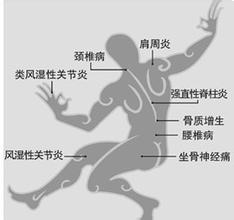Organic light-emitting diodes (OLEDs)quantum-dot-based LEDs, perovskite-based LEDs and micro-LEDs have been championed to fabricate lightweight and flexibleunits for next-generation displays and active lighting. Although there are already some high-end commercial products based on OLEDs, costs must decrease whilst maintaining high operational efficiencies for the technology to realise wider impact. Here we demonstrate efficient action of radical-based OLEDs, whose emission originates from a spin doublet, rather than a singlet or triplet exciton. While the emission process is still spin-allowed in these OLEDs, the efficiency limitations imposed by triplet excitons are circumvented for doublets. Using a luminescentradical emitter, we demonstrate an OLED with maximum external quantum efficiency of 27 per cent at a wavelength of 710 nanometres—the highest reported value for deep-red and infrared LEDs. For a standard closed-shell organic semiconductor, holes and electrons occupy the highest occupied and lowest unoccupied molecular orbitals (HOMOs and LUMOs), respectively, and recombine to form singlet ortripletexcitons. Radical emitters have a singly occupied molecular orbital(SOMO) in the ground state, giving an overall spin-1/2 doublet. If—as expected on energetic grounds—both electrons and holes occupy this SOMO level, recombination returns the system to the ground state, giving no light emission. However, in our very efficient OLEDs, we achieve selective hole injection into the HOMO and electron injection to the SOMO to form the fluorescent doublet excited state with near-unity internal quantum efficiency.
Enhanced strength and ductility in a high-entropy alloy via ordered oxygen complexes
通过有序氧复合物增强高熵合金的强度和延展性
▲ 作者:Zhifeng Lei、Xiongjun Liu、Yuan Wu、Hui Wang、Zhaoping Lu,et al
▲ 链接:
https://www.nature.com/articles/s41586-018-0685-y
▲ 摘要:
氧是地球上最丰富的元素之一,通常会在金属材料中形成一种不需要的间隙杂质或陶瓷相(如氧化物颗粒),而氧掺杂物会使金属变得脆弱。
这里研究展示了氧能以有序的氧复合物的形式出现,这是一种介于氧化物颗粒和随机间质之间的状态。
与传统的间隙强化不同的是,这种有序的间隙复合物使得复杂固溶体即高熵合金的强度和延展性都得到了前所未有的提高。
抗拉强度提高(48.5±1.8%)和延展性大幅改善(95.2±8.1%)打破了长期以来强度—延展性权衡。这些结果使人们对金属材料有序强化机制的作用有了更深入了解。
▲ Abstract



